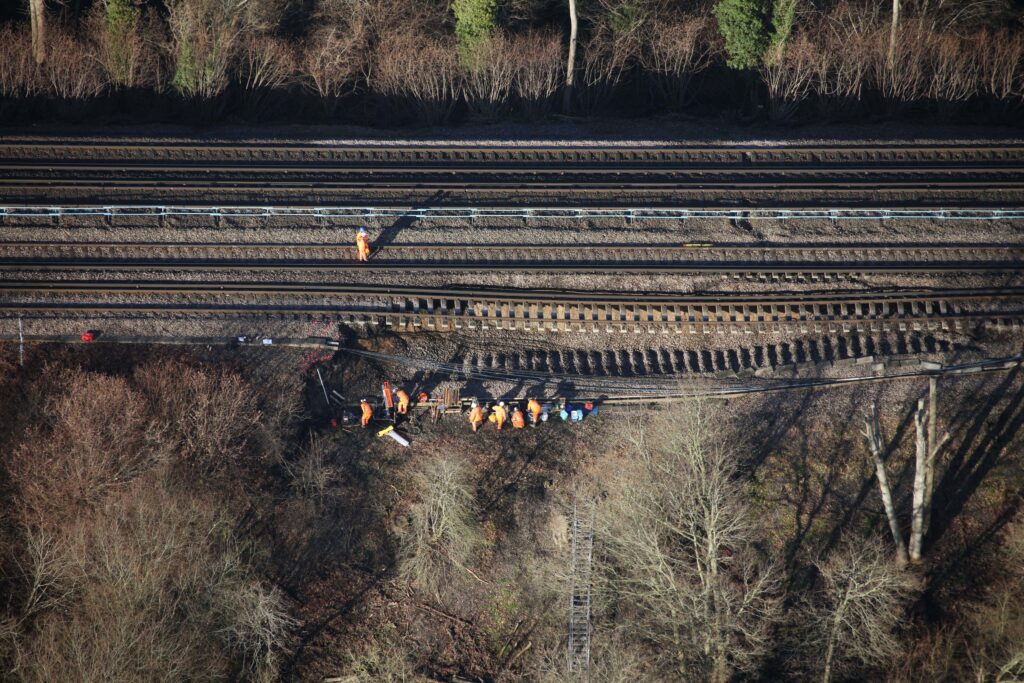Landslips explained

Extreme weather across Britain has put the railway at a higher risk of landslips.
What is a landslip?
Landslips happen on the railway when soil, rocks and earth fall on to and cover the track. This is often after long periods of heavy rain, when the ground becomes saturated with water.
How heavy rain can cause a landslip
Landslips can cause a lot of disruption and delays on the railway by obscuring the track. A train can’t swerve to avoid debris on the line, so we will often need to re-route services.
Our specialist geotechnical engineers work across Britain to stabilise and repair weakened assets, enabling a network more resilient to future risk events, such as extreme weather.
What we do when there’s a landslip
Following an emergency like this, we deploy our engineers to carry out any immediate works to the affected areas; some of our previous weather-related emergency repair works includes stabilising hillsides and repairing cutting slopes.
Even after an initial landslip there continue to be concerns, so our engineers and contractors will assess the site and the damage before they can start to remove the debris from the track. Once a landslip has started to move, it’s much more likely that there will be further landslips.
Some of the slopes – or cuttings – on either side of our tracks need to be strengthened. This work to stabilise the earth can take time.
Gallery: landslip repairs on the Bexleyheath line in Greater London
How we’re reducing delays caused by landslips
- It’s important we identify the sites prone to landslips to ensure we keep passengers and our engineers safe. We use helicopters equipped with laser imaging, detection and ranging to do this.
- Where we know sites are at risk of landslip, we use motion sensors and CCTV to detect soil and rock movement. These sensors send an alarm to the signaller, who will stop the train if alerted and wait until the area has been inspected by engineers.
- We can also stabilise the slope by putting in drainage or using steel rods or soil nails.
- If these options are insufficient, we will re-profile the slope to reduce its angle, making it less prone to a landslip.
- When we get flood warnings from the Environment Agency and Flood Forecasting Centre, we send people and equipment to the at-risk areas so we’re in a position to act quickly.